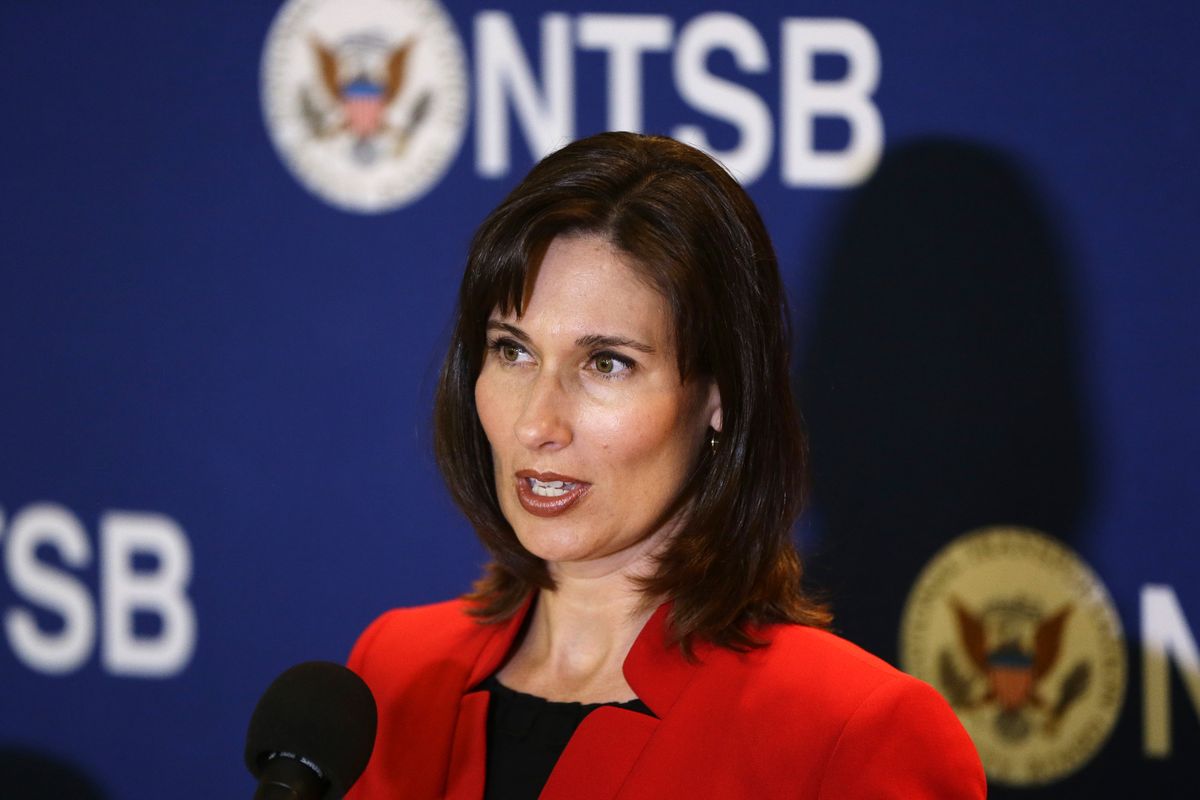NTSB urges safety technologies be made standard

WASHINGTON (AP) — The government should require automakers to make the latest collision prevention technologies standard equipment on all new cars and trucks, a move that could reduce fatal highway accidents by more than half, federal accident investigators said Wednesday.
The technologies include lane departure warning, forward collision warning, adaptive cruise control, automatic braking and electronic stability control. They are available on many cars and trucks already, although some are limited primarily to higher-end models. The National Transportation Safety Board said they should be required on all vehicles, despite the auto industry’s concern that doing so could add thousands of dollars to the cost of a new car.
“We don’t want safety to be only for the people who can afford it,” said the board’s chairman, Deborah Hersman, adding that the cost per vehicle of mandated technologies usually drops as they become more widespread. Another NTSB board member estimated some of the technologies would add only a few dollars to the cost of a vehicle.
Such technologies can prevent accidents that involve running off the road, rear-ending another vehicle and lane-change maneuvers, the board said. Those types of accidents account for 60 percent of fatal highway accidents. There were more than 32,000 traffic deaths in the U.S. last year.
The Obama administration “should establish performance standards where still needed and mandate that these technologies be included as standard equipment in cars and commercial vehicles alike,” the board said in a statement. “With such promising potential to improve highway safety, this technology should be robustly deployed throughout the passenger and commercial fleets.”
Electronic stability control, which automatically applies brakes to individual wheels to restore control, is already required for new passenger vehicles weighing less than 10,000 pounds. But large pickup trucks, 15-passenger vans and commercial trucks that exceed that weight aren’t included in the requirement.
Lane departure warnings alert drivers when a car wanders into another lane without signaling. Adaptive cruise control uses sensors to read traffic conditions and modulate the throttle and brakes to keep the car a safe distance from the vehicle in front of it. Forward collision warning systems monitor the roadway in front of the car and warn the driver of an impending collision. Some forward-collision systems will apply the brakes if the driver doesn’t take action to avoid an imminent collision. Similarly, automatic braking applies brakes to avoid an impending collision with another vehicle, person or obstacle.
The board’s recommendation also includes tire-pressure monitoring systems and speed-limiting technology for commercial trucks.
The board included the recommendation as part of its annual list of “10 most wanted” safety improvements. The NTSB doesn’t have the power to set regulations, but its recommendations carry significant weight with Congress and with federal and state agencies.
Some of the technologies were on the list in 2008, and the board previously has made piecemeal recommendations to the National Highway Traffic Safety Administration that it set performance standards for some of the technologies or require manufacturers include them in some vehicles.
But this is the first time the board is telling regulators and automakers that this new generation of technologies should be required on all vehicles, safety advocates said.
“What they are recommending is a safety system for cars where you have a multitude of things that cooperate together to dramatically improve safety in a vehicle,” said Clarence Ditlow, executive director of the Center for Auto Safety, a consumer advocacy group.
The recommendation got a chilly reception from automakers, which said it could drive up the cost of a new car.
Systems that warn drivers of an impending collision but don’t automatically brake cost about $1,000 to $3,000 per vehicle depending on the features, according government estimates cited by the Alliance of Automobile Manufacturers. Systems that both warn the driver of an impending collision and apply the brakes if the driver doesn’t act first, cost about $3,500, the alliance said.
“Automakers see great promise from their driver-assist technologies, and we are urging consumers to check them out, but the choice to purchase one or more belongs to consumers,” said Gloria Bergquist, vice president of the alliance.
“In this still-fragile economy, maintaining affordability of new vehicles remains a concern,” she said. “Today, the average price of a new vehicle is $30,000, more than half the median income in the U.S.”
But NTSB board member Robert Sumwalt said the technologies can be added to cars relatively inexpensively.
“Some of this technology can be done for literally just a few dollars,” he said. “I don’t think we’re talking about adding thousands of dollars to a car.”
That’s because many of the safety features rely on the same electronic sensors and computers.
“While it sounds like a lot of items, basically you are taking advantage of the sophisticated electronics in all modern automobiles,” Ditlow said.
This year’s most-wanted list also includes a recommendation that states and regulators ban nonessential use of cellphones and other distracting portable electronic devices by operators across all modes of transportation — cars and trucks, planes, trains and vessels.
The board said it has investigated numerous accidents and incidents in which operators were so engrossed in their devices that they lost awareness of their situation. As part of the recommendation, the board urged device manufacturers to perfect technology that disables cellphones and other devices when they are within reach of an operator while the car, truck, plane, train or vessel is in operation.
___
Follow Joan Lowy at http://www.twitter.com/AP_Joan_Lowy
___
Online:
National Transportation Safety Board: http://www.ntsb.gov